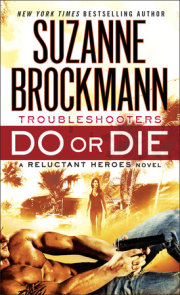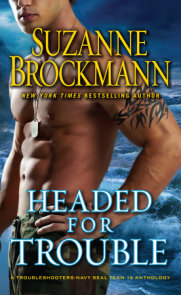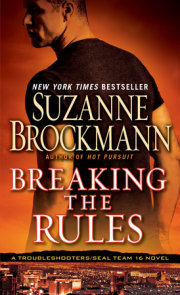
Gone Too Far
By Suzanne Brockmann
By Suzanne Brockmann
By Suzanne Brockmann
By Suzanne Brockmann
Part of Troubleshooters
Part of Troubleshooters
Category: Contemporary Romance | Romantic Suspense
Category: Contemporary Romance | Romantic Suspense

Buy from Other Retailers:
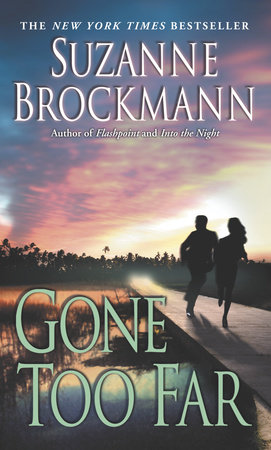
Buy from Other Retailers:
-
$8.99
Mar 02, 2004 | ISBN 9780345456939
Buy from Other Retailers:
-
Jul 01, 2003 | ISBN 9780345464361
Buy from Other Retailers:
About Gone Too Far
In a novel of action, intrigue, and romance, a U.S. Navy SEAL and an FBI agent race to unravel a mystery–while confronting their own unresolved feelings for each other.
In his career as one of America’s elite warriors, Lt. Sam Starrett can do no wrong. In his private life, Sam–the king of one night stands–has done little right. Now, he’s waiting for a divorce and determined to stay active in his young daughter’s life. But when Sam shows up at the door of his ex-wife’s home in Sarasota, Florida, he makes a grisly discovery. His daughter is gone and the body of a woman lies brutally murdered on the floor.
FBI agent Alyssa Locke’s relationship with Sam has been overwhelmingly intense and nearly catastrophic, yet it refuses to end. The last time she saw Sam was six months earlier, when they worked together to stop terrorists from assassinating the U.S. President. Much to her dismay, Alyssa is assigned to lead the murder investigation and once again the two are face to face. When explosive information surfaces linking Sam to the still unsolved assassination plot, the stakes are raised. With her reputation hanging in the balance, and her loyalties in question, Alyssa is faced with an impossible dilemma:arrest a man she believes to be innocent, or risk her career.
While Alyssa tries to fight their intense attraction, Sam is determined to heat things up between them once again. And the complex case pushes them both to the wrong side of the law–and on the run to discover the truth. As more agents step into the chase, and with Sam’s daughter still unaccounted for, neither Alyssa nor Sam can predict just how deadly hot this situation is about to become. . . .
A thrilling novel that ranges back into the days of World War II, into friendships, families, liaisons, betrayals, and the code of honor that binds the U.S. Navy SEALs, Gone Too Far is an electrifying experience in suspense–and a brilliant tale of lives lived on the edge.
About Gone Too Far
In a novel of action, intrigue, and romance, a U.S. Navy SEAL and an FBI agent race to unravel a mystery–while confronting their own unresolved feelings for each other.
In his career as one of America’s elite warriors, Lt. Sam Starrett can do no wrong. In his private life, Sam–the king of one night stands–has done little right. Now, he’s waiting for a divorce and determined to stay active in his young daughter’s life. But when Sam shows up at the door of his ex-wife’s home in Sarasota, Florida, he makes a grisly discovery. His daughter is gone and the body of a woman lies brutally murdered on the floor.
FBI agent Alyssa Locke’s relationship with Sam has been overwhelmingly intense and nearly catastrophic, yet it refuses to end. The last time she saw Sam was six months earlier, when they worked together to stop terrorists from assassinating the U.S. President. Much to her dismay, Alyssa is assigned to lead the murder investigation and once again the two are face to face. When explosive information surfaces linking Sam to the still unsolved assassination plot, the stakes are raised. With her reputation hanging in the balance, and her loyalties in question, Alyssa is faced with an impossible dilemma:arrest a man she believes to be innocent, or risk her career.
While Alyssa tries to fight their intense attraction, Sam is determined to heat things up between them once again. And the complex case pushes them both to the wrong side of the law–and on the run to discover the truth. As more agents step into the chase, and with Sam’s daughter still unaccounted for, neither Alyssa nor Sam can predict just how deadly hot this situation is about to become. . . .
A thrilling novel that ranges back into the days of World War II, into friendships, families, liaisons, betrayals, and the code of honor that binds the U.S. Navy SEALs, Gone Too Far is an electrifying experience in suspense–and a brilliant tale of lives lived on the edge.
About Suzanne Brockmann
Suzanne Brockmann is the New York Times bestselling author of more than fifty novels, including her award-winning Troubleshooters series, about Navy SEAL heroes and the women—and sometimes men—who win their hearts. In addition to writing books, Brockmann has co-produced several feature-length movies: the… More about Suzanne Brockmann
About Suzanne Brockmann
Suzanne Brockmann is the New York Times bestselling author of more than fifty novels, including her award-winning Troubleshooters series, about Navy SEAL heroes and the women—and sometimes men—who win their hearts. In addition to writing books, Brockmann has co-produced several feature-length movies: the… More about Suzanne Brockmann
Product Details
Category: Contemporary Romance | Romantic Suspense
Mass Market Paperback | $8.99Published by Ballantine Books
Mar 02, 2004 | 560 Pages | 4-3/16 x 6-7/8 | ISBN 9780345456939
Category: Contemporary Romance | Romantic Suspense
Ebook | $8.99Published by Ballantine Books
Jul 01, 2003 | 464 Pages | ISBN 9780345464361
YOU MAY ALSO LIKE

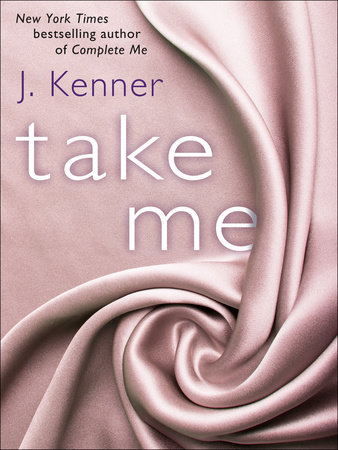
Take Me: A Stark Ever After Novella

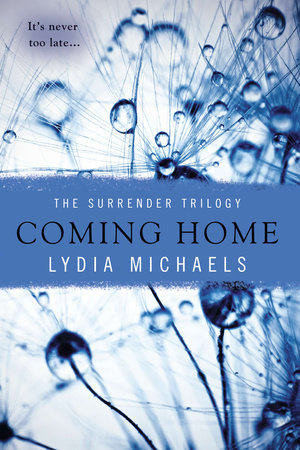
Coming Home

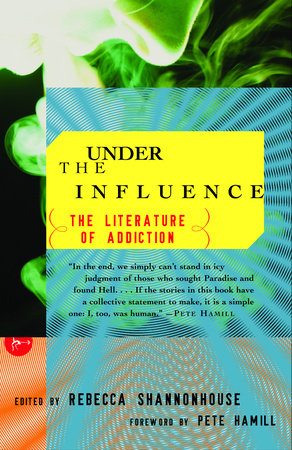
Under the Influence

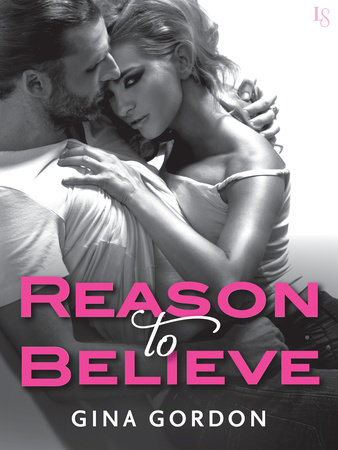
Reason to Believe

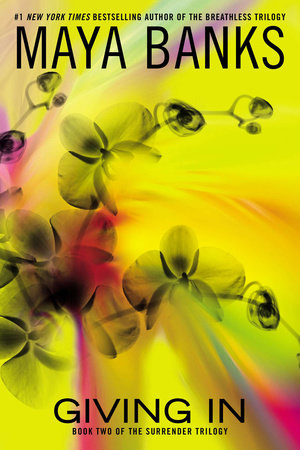
Giving In

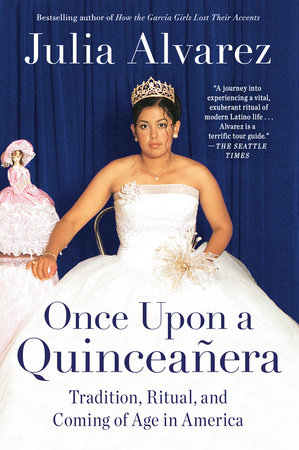
Once Upon a Quinceanera

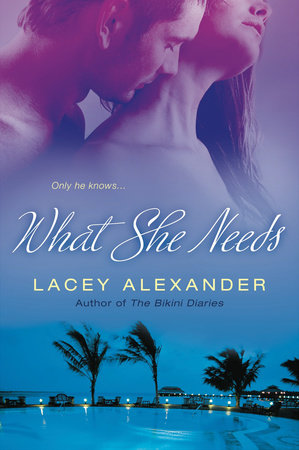
What She Needs

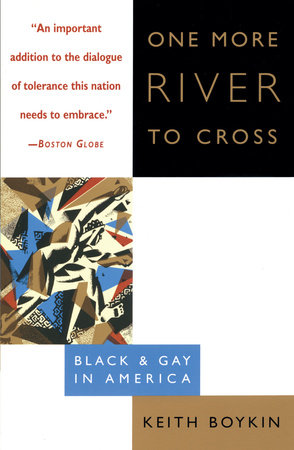
One More River to Cross

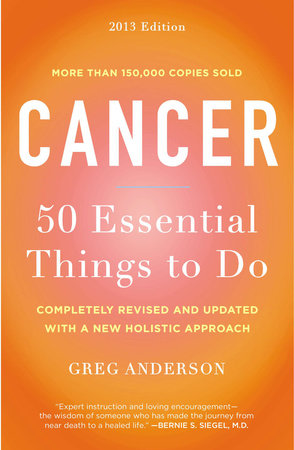
Cancer: 50 Essential Things to Do

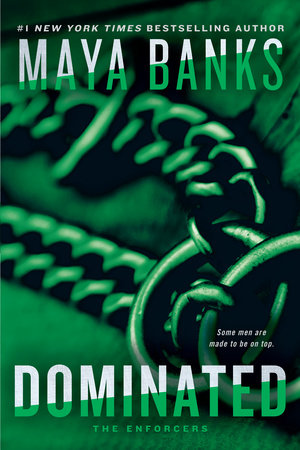
Dominated
Praise
Praise for Suzanne Brockman and Gone Too Far
“At last! Sam and Alyssa’s book! Gone Too Far is Suzanne Brockmann’s best book to date. There’s everything anyone could want: action, danger, suspense, passion, and tears. This is one I’ll read again.” –LINDA HOWARD
“Sizzling with military intrigue and sexual tension, with characters so vivid they leap right off the page, Gone Too Far is a bold, brassy read with a momentum that just doesn’t quit." –TESS GERRITSEN
“Suzanne Brockmann always delivers kick-ass heroes, unforgettable heroines and nail-biting tales of suspense.” –LISA GARDNER
Author Q&A
Interview with Suzanne Brockmann
Question: After visiting your website, my first question is: Where do you find the time, let alone the inspiration, to write so many novels? And how do you combine quantity with quality—as reflected in the numerous awards your books have received?
Suzanne Brockmann: I was born with the ability to write well and to write quickly, the same way I was born with ridiculously wimpy hair and an amazing ineptitude when it comes to doing simple math. It was part of the hand I was dealt.
I’m enormously aware of how lucky I am despite my propensity for bad hair days and a checkbook that has never actually been balanced, because not only was I born with this amazing gift, I was also born with a real love of the creative process. How do I find inspiration, you ask? How do I find air to breathe? It’s just there—it’s everywhere. It surrounds me.
I love what I do, I love creating the characters who come to life in my books, I love traveling with them on their journeys. It’s truly magical.
And, holy cow, here’s a complete bonus—there are all these people out there who enjoy reading my books almost as much as I enjoy writing them. So I’m getting paid to do something that I absolutely love to do. Can it get any better than that?
I don’t think so!
Q: You make it sound almost effortless. Isn’t there hard work involved in writing?
SB: Like most other skills, writing well and writing fast can be improved with practice, and I practiced both in the early days of my writing career. I wrote quite a few novels and other projects that will probably never see the light of day because they are unbearably awful! But they served a purpose—they were part of the learning process.
At one point in my career, I was writing TV scripts (none were ever sold, but I wrote a bunch of spec scripts for Quantum Leap and Star Trek: TNG), and I set myself a challenge. I wanted to be able to pitch a script idea on a Monday, go home and plot and write that script, and get it onto the producer’s desk by Wednesday afternoon. (I’m talking about a 47-page script for an hour-long TV drama.) For weeks, I practiced until I could do it—48 hours from story seed to polished draft.
(Okay, why on earth would I want to learn to do that? Well, I wanted to develop a reputation for being lightning fast. I already knew I was a fast and efficient writer, but I wanted to be even faster. It actually served me well after I started writing category romances. My editors knew they could call me up to fill in if another author missed their deadline. They also knew I’d turn around revisions in the space of a week. I was the “can do” kid.)
It was during that little exercise that I discovered the importance of outlining. Planning out my entire story in great detail drastically cut down the time I needed to write the script. It wasn’t long after that I started writing novels. The same outlining processes worked really well in that format, too.
By outlining, I know exactly who the characters are, and how they’re going to grow and change on their journey throughout the book. I also know exactly how the story is going to end, how the various conflicts will intertwine and be resolved. With all that planning, when the time comes, I can sit down and write the book relatively easily. I don’t have to spend hours sitting at the computer and going, “Hmmm, what happens next…?”
Q: Is that something you would recommend for aspiring writers in the audience?
SB: Not every writer can or should write this way—some of my own favorite authors are seat-of-the-pants or blank-page style writers. For them, outlining hampers the creative process. They enjoy the thrill of not knowing what’s going to happen next. I find that too time consuming—I’m too impatient!
Writing is such a personal thing—there’s no wrong or right way to do it. Your way is right for you, and my way is right for me. The same thing can be said for a writer’s ability to be prolific. Some writers take three years to write a book. I would go mad if I had to work that slowly. (And other writers in turn would suffer if they tried to fit their process into my four-month timetable.)
As far as quality goes, every single book that I write is my personal best. I’m constantly striving to improve, to grow as a writer. I’m always trying to write a book that’s better than my last.
Q: Better in what sense?
SB:It can get pretty subjective, can’t it? I guess it all boils down to an agreement I have with myself that each book I write will always contain a large chunk of my heart and soul—and I think my readers recognize and appreciate that, even if my definition of “better” is different from theirs.
Q: Did you always want to be a writer? What drew you toward the romance genre?
SB: I was one of those kids always lost in a book, always reading. Writing seemed to be the next step in a natural progression. I wrote my first novel, a Star Trek adventure, during high school—mostly to entertain my friend Denny, who sat in front of me in chemistry. It was silly and extremely self-indulgent, but when I finished, it was about 200 pages long—quite an accomplishment for a seventeen-year-old. It had a beginning, middle, and end, character development (sort of), and a solid plot with conflict and resolution. (And Mr. Tucker thought I didn’t learn anything in his chemistry class!)
As a young adult, I attended Boston University as a Broadcasting and Film major, thinking I might try for a career writing movies or for TV. I still have some major long-term screenwriting goals—I’ve got my eye on a screenwriting Oscar or maybe an Emmy. (Dream big, huh?)
College wasn’t quite as stimulating as I’d hoped it would be, and I dropped out midway to start an original rock band here in Boston. This was around 1980—remember new wave music? All the record companies were sending reps to Boston—it was the place to be. I sang lead and wrote most of the band’s songs—and met a lot of cool people, most of whom I’m still good friends with today. (I married my lead guitar player’s freshman college roommate!)
I spent a number of years (post rock band, and post marriage and two babies) writing screenplays and TV scripts. I had interest from a Hollywood agent, but his big question was, “When are you moving to LA?” At the time I lived north of New York City, and I was like, “Well, my husband works in Queens, and he already commutes three hours each day. California to New York seems a little too much to ask. But in about seventeen years, the baby will graduate from high school …”
The agent’s response was, “You’re a good writer, but there are ten people who live down the street in LA, who are also good writers. So I’m going to represent them before I represent you.” It was frustrating.
About this time, a good friend gave me a set of self-help tapes. The goal-setting workshop really resonated with me. It helped me figure out where I wanted to be, as well as the best route to get there. I decided to become a published writer in order to set myself apart from those ten other screenwriters living in LA. I decided to get published in genre fiction—I’ve long been a fan of mystery and science fiction, as well as romance. I did research into all three genres and was stunned by the sheer number of romances released every month. (I think at the time there were an average of 150 romance novels published every single month!) I suspected there might be room there for me! I did more research and read literally hundreds of romance novels. I also used something called “role modeling.” I noticed that many successful romance novelists had started out writing category romance, so I went that same route.
In June of 1992, I sat down to write my first romance novel. I can still remember being only about ten or fifteen pages into the book and running upstairs to find my husband to tell him that I’d just found the absolutely perfect format for my writing voice. It was a real eureka moment for me. It was such a great fit, and best of all, I loved writing romance. I’m fascinated by the human need for love. I think it’s something that touches us all.
Q: Even though you began as a romance writer, your books are no longer classified as straight-up romances but rather as hybrid genre-benders such as "romantic suspense" or "romantic thriller" or even "romantic military action." Do these labels have any influence on how you write?
SB: No, they really don’t. But I have to admit that I’ve used labels like those—and even the broader label of “romance novel”—to get away with writing exactly what I want to write.
I think labels are something that publishers, booksellers, and even readers use to help them organize the purchase and sales and selection of books. What’s this book about? Well, it’s about this man who comes to believe that terrorists have targeted his ex-wife and daughter. Oh, so it’s a thriller. Well, yeah, sort of. Except there’s more. Our hero comes face to face with a woman he’s had a couple of brief but intense affairs with in the past, and as they spend time together, they’re finally able to begin to build a real relationship. Oh, so it’s a romance. Well, yeah, sort of, except there’s more. An awful lot of time is spent on the hero’s childhood and …
And so on.
You know, the first book in my “Troubleshooters” series, The Unsung Hero, is really a novel about Charles Ashton, an 80-something WWII veteran with terminal cancer. This character’s story, both his adventures as a downed pilot in Nazi-occupied France and his contemporary struggles with his own impending demise, is the soul of this book.
And yet there’s enough going on in the book so that it is a romance. And a military action/adventure. And there’s a sweet secondary romance between two teenagers. And …
It’s a lot of things, all in one book.
Q: Two of your most popular series, the "Troubleshooters" and "Tall, Dark, and Dangerous" books, involve the lives and loves of two teams of Navy SEALs. Why SEALs? Is there a personal connection?
SB: Readers often ask if I have a military background, and it’s a big surprise when they find out that I don’t. My dad served in the Army briefly during the Korean conflict, but he never went overseas. That was way before I was born.
I remember being fascinated by World War II from a very early age. When I was about 11 years old, I read every book in the town library about WWII—everything from The Great Escape to extremely dry analyses of battle strategies. I’m pretty sure my interest came from my confusion over Vietnam. I can’t remember a time that the TV didn’t carry news about the Vietnam conflict. I didn’t understand what it was all about, and no one could explain it to me—at least not to my satisfaction! So I sought solace by reading everything I could about a war that had very clear cut good guys and bad guys.
Fast-forward to the early 1990s. I’m a newbie romance writer, and I’m looking for something called a “mini-series” hook. I want to write a trilogy of books, because readers really like trilogies, but I want to tie them together in a way that’s never been done before. Many authors have written trilogies about three brothers or three cousins or three sisters—the hook is the family. The series is called “The MacGregors” or “The Worthingtons.” Others have written books tied together through a location. “Conard County.” “Sunrise Key.” But I’m looking for something new. And I’m brainstorming, so I’m telling everyone I know. If they come up with any idea at all, no matter how stupid they think that idea is, they should tell me.
Well, I get a call from my friend Eric (the same guy who gave me those self-help tapes!), and he tells me to run to the library (these were my pre-internet days) because he’s just found my mini-series hook. He was at the dentist, and he read an article in Newsweek magazine on Navy SEAL BUD/S training—something they called Hell Week.
So there I am at the library, sitting cross-legged on the floor between the stacks, reading this article, and getting goose-bumps because, hallelujah, I have indeed found the hook I was looking for. And because I have a respect for the men and women of the military, I instinctively know I’ll love both researching and writing about these guys who call themselves SEALs.
The rest, as they say, is history!
Q: What’s the difference between the SEALs and other special forces groups such as the Green Berets or Delta Force?
SB: SEALs are the U.S. Navy’s contribution to U.S. Special Operations, so they’re frequently used when water—oceans, lakes, rivers—is involved.
Special Operations and Special Forces are two very different things. Special Forces go in with lots of firepower, lots of force, lots of noise.
Spec Ops is something else entirely. They operate in small, covert groups. In other words, they go in or “insert” silently, get the job done, and leave or “extract” without anyone knowing they’ve been there. (Or at least not until things start blowing up!)
SEALs have the attitude that if shots are fired, something’s gone wrong. Their missions are extremely low profile, with an emphasis placed on their ability to be cool under fire. There was a really great article in US News and World Report (Volume 123, no. 17, Nov. 3, 1997) in which retired Gen. Wayne Downing, former head of Special Operations Command, says, “We don’t want a guy who can beat up everybody in a bar. We want a guy who can go into a bar, realize it’s not a good place to be, and leave.”
The article went on to cite an example of a Spec Op task force whose mission was to help Americans get away from a civil war in Liberia in 1996. During the two weeks the SEALs were there, they faced both sniper fire and rocket-propelled grenades. Yet not a single shot was fired in return as they helped evacuate 2,126 people. This minimized chances of a firefight erupting at the embassy—an event that would have risked the lives of all those civilians.
Q: Aren’t these groups all-male? Do you agree with the reasons the military gives for excluding women from these kinds of combat roles?
SB: The SEALs are all male, and yeah, I think there’s a good reason for that— mostly because men can be such babies! <g> One of the key elements to the teams is the intense camaraderie, something that could be threatened with the inclusion of women. I also think that the male instinct to protect the female is something that’s been programmed into us, you know, the human animal. It might be difficult for a lot of men to overcome. That could really get in the way during a life and death situation.
At the same time, I believe completely that women are just as capable as men in all combat roles. There’s nothing that a man can do that a woman can’t do just as well—if not better. And it’s a fact that there are places where a woman can go without causing concern or suspicion, places where men would be stopped at the door and questioned. And a woman with a crying baby—now, she can go just about anywhere—especially through that door marked “exit”!
I think it would be really interesting for the military to create an all-female equivalent of a SEAL team. I’m pretty sure it’ll happen sooner or later.
Q: Have you received feedback from real SEALs, either officially or unofficially, on your portrayal of them in your books?
SB: I have. Most of the time, I hear from their wives, who enjoy reading my books.
I have many readers who are either in the military themselves or have family members in the military. It’s always an honor to meet them at book signings! I always try to take the opportunity to say “thank you.” Because, you know, it’s not just the soldier or sailor who serves—his or her whole family makes a huge sacrifice.
Q: The SEALs are an elite group of fighters specializing in clandestine operations. How do you research something like this without running smack into the brick wall of national security?
SB: Boom! That’s the sound of me running into a brick wall!
Most of the research I’ve done on the SEALs is through books. I’ve also visited the UDT/SEAL Museum in Ft. Pierce, Florida. (The granddaddies of the SEALs were the Underwater Demolition Teams of WWII.)
There’s a lot more material out there now than there was when I first started writing about SEALs. There’re a couple of really great programs they show regularly on the Discovery Channel, too.
I try to read everything I can get my hands on about the Spec Op teams, including news reports—although I learned to be careful to take that info with a grain of salt. Most reporters don’t know the difference between special forces and special ops and often use the two terms interchangeably.
Q: Did researching and writing about SEALs change your view of the military and the men and women who serve their country in uniform?
SB: I’ve always had a very healthy respect for the men and women in the U.S. military. But my relationship with the SEALs (and I’ve been writing about them for eight years now!) has really given great weight to those feelings.
I really do think these guys are special. I just do not get tired of writing about them!
Q: I’ve heard news reports mentioning SEALs at work in Iraq. Based on your knowledge of the teams, what are they up to?
SB: Oh, boy, they are all over the place in this conflict. I’ve read news reports about how they gained control of Iraqi oil platforms—an important ecological win for the world.
I’m pretty sure they’re in Baghdad and in the other Iraqi cities, cutting communications, making it difficult if not flat-out impossible for Saddam to give orders to his troops.
This entire campaign is being carried out by U.S. military leaders who seem to know how to use both Spec Ops and Special Forces to their best advantage—which is a good thing.
In theory, it works like this: Instead of sending in ground troops to take Baghdad building by building, house by house, Spec Op teams of SEALs enter the city covertly. They know how to be invisible, they can take out cell towers and other methods of communication without even firing a shot. They can identify and even destroy key military targets. They can create confusion and cut electricity and possibly even remove military leaders.
Meanwhile, the U.S. is putting on quite a little show known as Psy Ops or Psychological Operations. The precision bombing of key targets in the city, the “Wall of Steel”—all those tanks heading for Baghdad, constant news on CNN about Iraqi soldiers surrendering, an incredible show of might.
The objective? To convince the Iraqi Army to surrender, winning the war through unconventional means, without a terrible loss of life.
Q: How do your two SEALs series differ from each other? And have the two teams ever crossed paths . . . or do you plan for them to do so in the future?
SB: I have no immediate plans for the two teams—Team Ten and Team Sixteen—to cross paths. (It’s actually kind of funny—when I first started writing my “Tall, Dark & Dangerous” books, there was no real SEAL Team Ten, but now there is!)
The two different series have two different publishers. The TDD series (now ten books strong, with an eleventh due out in September) are category romances published by Silhouette and are currently being reissued by Mira Books. They’re shorter and less intense, with significantly fewer subplots. They have less realistic language, too. (SEALs are sailors, and they talk like sailors, but category romances have restrictions in terms of bad language—similar to network television.)
And because I wrote them first, at a time when there was far less research material available, Team Ten is structured more like a Vietnam-era SEAL team.
My SEALs of Team Sixteen, in my “Troubleshooter” books published by Ballantine, are more up-to-date. The stories are longer, denser, grittier, and far more realistic.
Q: Gone Too Far is the sixth novel in the "Troubleshooters" series, and the first of your books to be published in hardcover. Congratulations! I’m sure I’m not the only one wondering what took so long. Based on your sales and awards, it would seem that you’re long overdue for the step up to hardcover.
SB: Thank you! But to be honest, when my editor called to tell me that Gone Too Far would be out in hardcover, I spent about an hour on the phone with her, trying to talk her out of it!
I have strong feelings of loyalty to my readers, and I know that hardcover books can be expensive. But Ballantine promised me they’d keep the price of this book as low as possible, and at $19.95, they’ve done just that.
And if readers buy the book during the first two weeks it’s on sale, they can send in for a $5.00 rebate. (The coupon is available in this chapter sampler booklet, or you can get a copy on-line. Visit my website at www.suzannebrockmann.com for details.)
Q: Gone Too Far reflects a recognizably contemporary America. That means, among other things, that the War on Terror—including skirmishes with al-Qaeda and references to action in Afghanistan—is very much front and center. Given that a book is written, turned in, and put into production as much as a year before it actually sees print, and series are often plotted out even further in advance, how do you walk the tightrope between keeping the feel of things current and the risk of having real-world events overtake your book? Perhaps you could address this question using the war in Iraq as an example. Will you work it in to future books? How?
SB: This can be really tricky.
My third “Troubleshooter” book, Over the Edge, was released two weeks before 9/11. This is a book in which terrorists/suicide bombers hijack a commercial airliner.
Of course I’d written the book nine months earlier. And oh, you should have seen the research I did, trying to find an airport in Europe from which a hijacking could believably take place. I finally settled on Athens, which has a track record of trouble with terrorists. Still, it was one of those things where I thought, “I wonder if people will think this is too unbelievable …”
Little did I realize that not twenty minutes from my house was an airport—Logan, in Boston—where terrorists could and would hijack those flights that took down the Twin Towers.
It still seems so unbelievable to me …
After 9/11, I immediately stopped all promotion, of course. I started getting email from people, reporting that booksellers were pulling Over the Edge out of the front of their stores. This was not a good time to have the words “hijacking” and “terrorist” on the back cover of a book that was supposed to be a pleasure read.
But, you know, it so didn’t matter to me. Whether or not my book sold was so completely inconsequential, considering the scope of this national tragedy.
But then somewhere around the end of September, that book—and many of my others as well—started flying off the shelves. Apparently people wanted to read a story where the good guys won, where the people on the hijacked plane were saved, where the terrorists got their asses kicked, Navy SEAL style.
I’d already written the fourth book in the series, Out of Control. In fact, I remember that I sent it to New York so it would arrive on my editor’s desk on September 10th. The action in that book takes place in Indonesia—a country that has since seen its share of terrorist activities.
I actually made a very conscious choice with OOC not to insert any mention of 9/11. I felt very strongly about this being the last book I wrote during that period of time I’ve come to call “before.” 9/11 has become a very prominent marker in my life. I have a very strong sense of before and after.
The first book I wrote “after” was the fifth “Troubleshooters” book, Into the Night. That book had a prologue that took place in Afghanistan during Operation Enduring Freedom. The book itself was set at the Coronado, California Naval Base, but I wanted to make sure my readers knew that the members of SEAL Team Sixteen had done their part in the fight against al-Qaeda. (And I’ll probably work Operation Iraqi Freedom into future books in a similar way, through prologues.)
Into the Night involves a terrorist plot to assassinate the U.S. President. Shortly after I wrote it, I started hearing about al-Qaeda plots to assassinate world leaders …
It can be unpleasant to sit around thinking, “If I were an al-Qaeda leader, where would I strike America next?” And yet that’s what I do when I plot my books.
After 9/11, I resisted returning to work. It took me three months to start writing again. I kept thinking, “Can’t I write a book about puppies or bunnies?” I really didn’t want to get inside of the heads of the terrorists and plot out that next attack. Grim stuff, you know?
But then I started getting email from readers—telling me how much my books meant to them. They told me of the comfort they’d received from reading or even rereading old favorites of my books. They said it gave them hope and a sense of security to read about my fictional SEALs, knowing that the real SEALs were out there, working hard to keep America the land of the free.
Needless to say, I have no books about puppies or bunnies coming out in the near future!
Q: GTF is unusual, it seems to me, in highlighting interracial relationships . . . not just between a black woman and a white man, which has become much more common, but between a white woman and a black man, which is still unfortunately more controversial and capable of shocking some people of both races. Why is it important to you to focus on interracial romance and the questions of racism it inevitably provokes? Rather than reflecting contemporary America, in this case you seem to be advocating for a more racially inclusive future America.
SB: I fear that my version of America is far more racially inclusive and tolerant than the America I’ve been reading about in the news and seeing lately on my TV. I’m shocked by stories of people being kicked out of shopping malls for wearing anti-war T-shirts. And I’m equally stunned by reports of anti-war demonstrators defiling 9/11 memorials. That intolerant America scares me, I must confess.
To me, America is all about freedom and equality. It’s about people being allowed—no, urged—to raise their voices, both to protest the war and to support the war, to have and express different opinions without being called un-American. It’s about an open-minded exchange of ideas. It’s about the excitement of diversity, the welcoming of different races and the respect of other cultures—about the strength that comes from knowledge, from exploring new possibilities.
What’s un-American is to say, “No, you cannot speak. Your views aren’t welcome here.” That’s what the terrorists are saying, isn’t it? “Our way is the only way—and you who have different beliefs deserve to die.”
I’m well aware that America isn’t perfect. We still have far to go in terms of tolerance and acceptance of diversity.
I believe quite strongly that racism (and homophobia!) comes from ignorance and a fear of the unknown. One of my goals is to introduce readers to a world that’s diversely populated—to make them fall in love with characters that they might otherwise keep at arm’s length.
One of my most popular characters is Jules Cassidy, an FBI agent who happens to be gay. And one of my ongoing story arcs in this series is about Jules’s friendship with Navy SEAL Sam Starrett, the hero of Gone Too Far. Sam’s pretty darn homophobic when he and Jules first meet in The Defiant Hero. But throughout the course of three or four books, Sam gets to know Jules not as “that gay guy” but as an individual, a person. And—much to Sam’s surprise—he begins to think of Jules as a friend.
I don’t know exactly how many of my readers come into contact with people who are openly gay on a regular basis. But I suspect for some of them, Jules Cassidy is their first openly gay friend.
In a similar vein, one of my “Tall, Dark & Dangerous” books, published in 1998 by the Silhouette Intimate Moments category romance line, called Harvard’s Education, featured an African American hero and heroine. Category romances are published in a series, which means each book has a number on their spine. Harvard’s Education was the 884th Silhouette Intimate Moments published, yet it was only the second ever to feature black characters. Amazing, huh?
This book was about U.S. Navy SEAL Senior Chief Daryl “Harvard” Becker—so nicknamed because the man had attended that Ivy League school before joining the Navy.
I can’t tell you how much mail I received about this book from white readers who had never before read a romance novel about a black man and woman. They wrote to tell me how much they loved the book. They said that although they picked it up with some trepidation, thinking “what do I have in common with these characters?”, by page five, they’d come to the conclusion that skin color doesn’t matter. They’d found out that they have everything important in common—that people are people, and a love story is a love story.
It’s possible that for some of these readers, my two characters, Harvard Becker and his lady love, P.J. Richards, were their first two black friends. (Harvard’s Education will be reissued by Mira Books next year, in July 2004.)
Q: Set during and after WWII, the love story between Walt, an African-American fighter pilot, and Dot, a white woman who also happens to be a pilot, could be a novel unto itself. Have you considered giving them their own book?
SB: All of the books in the “Troubleshooters” series have WWII subplots, and many have elderly secondary characters who lived through that war. One of these days I’m going to write a book that’s set entirely during World War II. But it won’t be Walt and Dot’s story—that’s been told to my satisfaction in Gone Too Far!
Q: I found the relationship between your hero, Sam, and his best friend, Noah, Walt’s grandson, moving and inspiring. As they grow from children into men, their evolving friendship really illuminates some important truths about America. Without giving away any plot twists, could you talk a little about these two men?
SB: Isn’t there some expression that states how you can judge a man by the company he keeps?
I felt it was important to the book to allow the reader to fully understand Sam—what he believes, what he values, what he fears, what makes him vulnerable—and what better way to show who he is by exploring his relationship with his best friend from his childhood?
Q: Fans have been looking forward to GTF because of rumors that this is where white-boy Lt. Sam Starrett, aka Ringo, aka Roger, the ultimate SEAL and the poster-child for one-night stands, and half-black FBI Agent Alyssa Locke, who’s his match, or maybe more than his match, in every way, finally get together after a tempestuous history. Again, I won’t ask you to give any secrets away, but what is it about these two that sets the sparks flying between them? And what makes them so popular with readers?
SB: Ah, Sam and Alyssa.
Sometimes I do a Q&A session before a booksigning, and I’ll walk in and everyone will be really shy and quiet. You know, “Who’s got a question?” Silence. Then I say, “So. Who wants to know what’s next for Sam and Alyssa?” and the energy in the room just explodes!
What’s the deal with Sam and Alyssa? I’ve spent quite a bit of time thinking about that. I have to confess that I set out to create a stir with these two characters. I knew that having their story arc extend out over the course of six books was something that was going to catch readers off-guard. Often in romance novels, subplots that focus on the relationship between secondary characters are neatly tied up with their own HEA (happily ever after) by the end of the book.
But I believe very strongly that characters must earn their happy endings.
And I believe that romance readers are cheated out of a whole array of emotions because the HEA of a romance novel is a given.
See, it all started when I was thinking about books like The Bridges of Madison County or Love Story or Message in a Bottle. These are all classic love stories. They’ve been tremendously popular, and yet they don’t have happy endings.
And how about Casablanca? This movie with Humphrey Bogart and Ingrid Bergman is one of my all-time favorites. I have a top ten list of movies that changes with my mood, but Casablanca’s always on it, always in the top slot. Number One. Favorite movie of all time.
In Casablanca, Rick and Ilse share an enormous love for one another, and yet they can’t be together. As the movie ends, they go their separate ways. And oh, the bittersweet emotions that are evoked by their sacrifice!
These are emotions that readers of traditional romances don’t get to experience.
Okay. So I was sitting around, thinking about that, and I decided that in my books, only the main characters would be guaranteed a happy ending. For everyone else—all of the secondary characters—the happy ending is up for grabs! And oh, I might even kill off the secondary characters! Yikes!
At the same time, I decided to set up two characters whose entire back story would play out over the course of this series of books. (Originally, Sam and Alyssa’s story arc was seven books long, but my editor asked me to compress it, and I managed to squeeze their story into six books.)
Now, it’s quite common in a romance novel for two characters to share a history. You see it all the time. Hero A and Heroine B are forced to work together to solve a mystery, despite the fact that four years ago they had a one night stand that ended badly. This time around, however, they’re older and wise and they have a chance to get it right, to make their relationship work. The back story is told to the reader through the characters’ introspection or through dialogue or even brief flashbacks.
Well, what I wanted to do was to show the readers that back story in full detail. I wanted them to experience the back story along with Sam and Alyssa. I wanted it to play out in relative “real time.”
So, in The Unsung Hero, Sam and Alyssa meet and clash. They both play relatively minor roles, but I’m setting them up for some real fireworks.
In The Defiant Hero, they share a major subplot. They clash some more, but they also spark. And the reader gets to see that one night stand, played out in detail. But at the end of the book, Sam and Alyssa part. They don’t communicate well enough, and they’re not honest enough with each other, to take a chance on a real relationship. So they go in two different directions.
Over the Edge takes place six months later. It’s clear that Sam and Alyssa have each been unable to forget the other. And again they clash. And again they have a romantic encounter. And just when it looks as if they’re on the verge of communicating, that they might actually stand a chance at having a real relationship, Sam’s former girlfriend, Mary Lou shows up, pregnant, with the news that the baby’s his. And Sam believes that the right thing to do is to marry this other woman. (Boy, did I get a lot of passionate email from readers after this book came out! “How could you do that…?!?!”)
Now, keep in mind that throughout all of these books, Sam and Alyssa’s story isn’t the main plot. There are main characters in these books, with their own conflicts and goals. And those main characters are delivering that guaranteed HEA ending that allows these books to be shelved in the romance section of the bookstore!
In the next book in this series, Out of Control, Sam’s married to Mary Lou, and Alyssa’s forced to deal with him on a professional level. It’s not a happy time for either of them. Their subplot is much smaller, and is told entirely from Alyssa’s point of view.
Into the Night was the next book that came out, and in this one, I wrote a subplot from Sam’s perspective. We get to see just how miserable he is. Mary Lou’s story is also in this book, and she grows to some extent and realizes that a marriage that isn’t based on love isn’t really worth much at all. At the end of the book, she files for divorce, thus freeing a much older and wiser Sam.
So here it is, time for Gone Too Far. It’s six months later—and more than three years after Sam and Alyssa’s first encounter in The Unsung Hero. (TUH was first published in June, 2000.)
Readers are more than ready for this book. The anticipation is intense! As I said earlier, I set out to create a stir with these two characters. But I had no idea that the reader response would be so huge! I feel a little like Dr. Frankenstein. Oh, my word, look at this monster I’ve created!!!
Q: I’ve mentioned the interracial aspect of these relationships, but of course that’s only part of who these characters are.
SB: One thing that’s most important to me about Sam and Alyssa’s story is that to them, race really isn’t an issue. And the fact that Sam is white and Alyssa is black hasn’t been an issue to my readers, either.
It’s been an interesting phenomenon to watch. Most of my readers are white women. But Alyssa Locke is, by far, the most popular female character I’ve ever written. Ever. The fact that she’s black (or half-black, which in America translates to black) is completely irrelevant. Isn’t that cool? I think that’s extremely cool.
You know, I’ve written 39 novels, most of them romances, and all of my characters learn that when you find love—real, true, passionate love with someone that you respect, someone who you also really like—you grab hold of it with both hands and you don’t let go.
Q: Another thing that struck me about GTF is how rich the subplots are. It’s no exaggeration to say that the main two or three could easily have been novels of their own. Is this something you bring to all of your books, including stand-alones, or is it a function of working in an ongoing series, where characters and situations evolve over time?
SB: I spent the early part of my career writing category romances—short contemporary romances where the entire focus of the book was on the hero and heroine. Any subplot included had to be extremely minor.
I have to tell you the story of when I sat down to write Heart Throb, my first single title book, my first “big book,” as they’re sometimes called. I wrote this 80-page outline—the story was about this former A-list actor who was a recovering substance abuser who was hoping to make a come-back. The book takes place on location, on the set of a very low-budget independent movie being filmed in the southeast, in the summer. (Think humidity and mosquitoes!)
The movie’s producer had found this quaint little southern town where the film was going to be shot, and I created this huge cast of characters. Not only did I make up a subplot and backstory for two teenaged actors involved in the filming, but I had a subplot for the town’s mayor, and the local preacher, and the two women who owned the lunchonette. Oh, this book was going to be Fried Green Tomatoes meets Living in Oblivion, with all those rich, southern characters clashing with my Hollywood types…
Well. Long story short, I sat down to start writing the book and came to the realization that if I really did use all eight dense subplots, this book was going to be 15,000 pages long. When people said “Big book,” they didn’t mean that big! So I cut the mayor and the preacher and the luncheonette women. The teenagers got to stay. (And theirs was another interracial romance. Hmmm. Definitely something I come back to again and again in my books!)
Since that time, my books have been getting longer and longer!
Truth is, I love writing thick, interwoven stories. I love subplots that seem to start out completely unrelated and then weave together with all of the other subplots until, by the end of the book, everyone’s crossing over into everyone else’s subplot!
I definitely do this in all my longer books. It makes the storytelling process so fascinating. So many voices, and so many choices in terms of how to tell the story, you know? Especially toward the end of the book, when everyone is interacting.
One of my earliest unpublished books was written in the first person, from the point of view of an intergalactic smuggler. (Shades of Han Solo.) I don’t think I could write a book in the first person anymore. It would be far too limiting. Boy, what a challenge that would be. Hmmm, but I like challenges …
Q: Any thoughts of branching out into science fiction or fantasy? I know that these genres have proved especially popular with romance readers.
SB: I love science fiction—I’m drawn to it as both a reader and a viewer of TV and movies. I did write one SF romance early in my career. It’s now out of print and hard to find—a Bantam Loveswept that they titled Time Enough for Love. It’s a book in which the hero, after developing a method of time travel and discovering that it will be used as a weapon, travels back eight years into his own past to prevent himself from … developing time travel! It was a fun book to write—there’s a love triangle between the heroine and the hero from the future and the hero from the present. In most romance novels, writers need to use introspection as the hero wrestles with his feelings for the heroine. In this book, the two versions of the hero got to argue aloud!
That was a story idea that I’d had kicking around in my head for quite some time. I’m glad I got to write it. But shortly after I did, I started writing military action/adventure romance in earnest. That’s been my focus ever since. The “Troubleshooters” series will probably continue to be my focus for some time to come.
But I have a rule about never saying never!
Q: Are there any movie or TV deals in the works involving any of your books?
SB: No, there are not. But I hold out hope for someday (soon!) developing a cable miniseries with the “Troubleshooters” books. There’s just too much story to try to squeeze them into feature length movies. I think something like an HBO or Showtime miniseries is a better fit.
I’ve always been a very goal-oriented person, and for years I’ve had a super long term goal—by the time I turn 50, I’m going to either have written and produced (and possibly even directed!) or currently be in production for an independent film or a TV series. I’ve got eight years!
I’ve recently just formed a production company—we’ve got plans in the works to make a short film within the next few years. (The script’s something I’ve been thinking about for a while—I just need to find the time to get it down on paper!)
But even though I have very definite plans to get into filmmaking, I’m going to continue to write books. And I intend to continue my “Troubleshooter” series, too. Gone Too Far isn’t the end of this series, not by a long shot.
Q: What kind of books do you prefer to read for your own enjoyment?
SB: Oh, this is a tough question, because I absolutely cannot read fiction while I’m writing my books. And my writing schedule is pretty intense. I read only when I’m on vacation, a few paltry weeks each year. So, when I do get a chance to read, I’m really picky.
I really enjoy reading historical romances, because they’re so different from what I write! I’m a big fan of Jo Beverly and Julia Quinn. My all-time favorite author is Carla Kelly, who writes Regency romances for Signet. She’s amazing.
There are some contemporary romance authors I enjoy—Susan Elizabeth Phillips is an auto-buy for me, as is Jennifer Crusie. I also just finished reading Robert B. Parker’s latest. He rocks.
When I’m writing, I’ll read books about WWII or the SEALs, or things like Street E&E (Evading, Escaping, and Other Ways to Save Your Ass When Things Get Ugly) by Marc “Animal” MacYoung. Seriously. That was one excellent book—informative and funny, too. I’m a big fan of Marc MacYoung.
I also read trades mags—Variety and Entertainment Weekly and Premiere. And Publishers Weekly.
Q: What are you working on now?
SB: Right now I’m 89 pages into the next book in the “Troubleshooters” series. The working title is Flash Point, and the hero is not a Navy SEAL. I’m not going to say anything more about it—not only is it bad energy to discuss the work in progress, but any details would be potential spoilers for Gone Too Far!
I can tell you that, once again, there’s a multi-book story arc (only three books this time!) and that—as of right now at least—the second book features Navy SEAL Chief Cosmo Richter.
Q: Any final thoughts?
SB: Yes! I’ve got a multi-city book tour being planned for July 2003. I’ll be doing book signings up and down the East Coast, starting in New York City on July 15th—that’s the date Gone Too Far first goes on sale! New Jersey, Baltimore, Washington, Richmond, Virginia Beach, Columbia, Charleston, Jacksonville, Atlanta, Knoxville, and Wilmington (among others!) are all on the tentative schedule. Visit my website at http://www.suzannebrockmann.com/appearances.htm for exact times, dates and store locations. I love meeting readers—I hope to shake hands with a great many this July!
21 Books You’ve Been Meaning to Read
Visit other sites in the Penguin Random House Network
Just for joining you’ll get personalized recommendations on your dashboard daily and features only for members.
Find Out More Join Now Sign InAccount Overview Recommendations Orders Account Details Email Preferences Bookshelf







